|
The German school of fencing “Kunst des Fechtens“ is the historical system of combat taught in the Holy Roman Empire in the Late Medieval, Renaissance and Early Modern periods (14th to 17th centuries), as described in the Fechtbücher ("combat manuals") written at the time. The geographical center of this tradition was in what is now Southern Germany (Augsburg, Frankfurt, Nuremberg). During the period in which it was taught, it was known as the Kunst des Fechtens, or the "Art of Fencing". It comprises the techniques of the longsword “Blossfechten”: fencing with (single-handed) sword and buckler (or a large shield in the case of judicial combat according to Swabian law), and armoured fighting (Harnischfechten), the latter reserved only for nobility, but also describes many other types: unarmed grappling, fighting with polearms, with the dagger, the messer with or without buckler and the staff. Master Sigmund Ringeck said about Kunst des Fechten; "Princes and Lords learn to survive with this art, in earnest and in play. But if you are fearful, then you should not learn to fence. Because a despondent heart will always be defeated, regardless of all skill." Who was first master of German fencing school? Every body say that was Johannes Liechtenauer. But some scholars said that Liechtenauer didn’t exist. But let say that he was historical figure. Who was Johannes Liechtenauer? Johannes Liechtenauer (Hans Lichtenauer, Lichtnawer) was a German fencing master in the 14th or 15th century. No direct record of his life or teachings currently exists, and all that we know of both comes from the writings of other masters and scholars. The only account of his life was written by the Hans 'Pfaffen' Döbringer of the MS 3227a, one of the oldest texts in the tradition, who stated that "Master Liechtenauer learnt and mastered the Art in a thorough and rightful way, but he did not invent and put together this Art (as was just stated). Instead, he traveled and searched many countries with the will of learning and mastering this rightful and true Art." Liechtenauer was described by many later masters as the "high master" or "grand master" of the art, and a long poem called the Zettel ("Recital") is generally attributed to him by these masters. "Here begin the zedel of the knightly art of combat, which were composed and made by Johannes Liechtenauer, who was an eminent master in these arts, and on whom God may have mercy" The Fellowship of Liechtenauer (Geselschaft Liechtenauers) is a group of seventeen masters listed in the introduction to the three oldest copies of Paulus Kal's fencing manual. It is unclear whether this was ever a formal organization or what its nature might have been. However, in the early 1400s fighting men often organized into companies called Gesellschaften when they went to war. The Fellowship of Liechtenauer may therefore be a group his students and associates which he assembled for a military campaign. Alternatively, it has been speculated that the list is rather a memorial to deceased masters of the grand master's tradition. Of particular interest is the international nature of the group, including masters from present-day Austria, Czech Republic, Germany, and Poland, which parallels the statement in the MS 3227a that Liechtenauer himself traveled to many lands to learn the art. Paulus Kal, the presumptive author of the list, includes the following as members of the fellowship: Johannes Liechtenauer, Peter Wildigans von Glatz, Peter von Danzig zum Ingolstadt, Hans Spindler von Znaim, Hans Seydenfaden von Erfurt, Andre Liegniczer, Jacob Liegniczer, Sigmund Schining ain Ringeck, Hartman von Nuremberg, Martin Huntfeltz, Hans Pegnitzer, Philipp Perger, Virgil von Kraków, Dieterich von Braunschweig, Ott Jud and Hans Stettner von Mörnsheim. Several masters from this list are known to have written fencing treatises, but about half remain completely unknown. Johannes Liechtenauer When we talk about masters who they were? There are a few basic types of masters that we encounter in the study of fencing manuals. Court masters, masters recognized by a noble and attached to their court. Guild masters, masters tested and certified by a fencing guild. School masters, masters who operated their own fencing academies. Other masters, any master who is identified as such in primary source literature. If we talk about their profession we have a variety of professions. Their professions was from fencing masters, clerics, knight, court official, barbers, toll collectors, mercenaries, body guards, hatters etc. When we talk about manuscriptes we have 6 different tipes: A commonplace book (or Hausbuch) is essentially a scrapbook, usually made by a wealthy individual. In the late Middle Ages, they were created as repositories of miscellaneous items and information that the owner considered significant, including medical recipes, quotations, letters, poems, tables of weights and measures, proverbs, prayers, and legal formulas. Each commonplace book was a unique work reflecting its creator's hobbies and interests. Some of these books, such as the so-called Codex Döbringer, therefore included copies of martial arts treatises that passed through their owner's hands. 1389-Nuremberg Hausbuch (MS 3227a) Fencing book (or Fechtbuch) is a catch-all term for treatises on armed combat. In these book it was common that writer demonstrates several types of weapons. 1470 - Paulus Kal - CGM 1507 Sketchbooks created by talented artists survive from the Medieval and Renaissance time periods. These artists, including such masters as Albrecht Dürer and Maarten van Heemskerck, generally sketched fencers and wrestlers as studies in human anatomy. Because of this, they offer unique insight into the physical positions and movements of the art, providing a useful counterpoint to the large number of text-only fencing treatises. Some of these works were created as draftbooks for later complete fencing treatises. 1512 - Albrecht Dürer Fechtbuch (MS 26-232) A tourmanent book (or Turnierbuch) is generally a record of a specific tournament that occurred. Aside from being interesting glimpses into the sportive side of historical European martial arts in period, tournament books are also useful for their depictions of authentic arms and armor. 1686 - Mathern Fechtbuch (2° MS Math.7) War book (or Kriegsbücher) are useful texts for understanding the methods and theory behind warfare in the Middle Ages and Renaissance. Many compilation fencing treatises from the 15th and 16th centuries. Siege warfare was an especially popular subject in this genre. 1402. Konrad Kyeser - Bellifortis (Clm 30150) The wrestling book (or Ringbuch) can be seen as a subset of the fencing treatise genre. Most 15th century martial arts manuscripts include at least one wrestling treatise, but wrestling was often seen as an aspect of armed combat and not a separate discipline. It isn't until later in the Renaissance that books devoted exclusively to wrestling and other unarmed techniques appeared in increasing numbers. 1500 ca - Hans Wurm - Das ringenbuch These texts are generally not manuals as the modern audience understands the genre; rather than offering step-by-step instructions on fighting, they are more often general treatises on a variety of martial subjects, and even those treatises that include details and illustrations of specific techniques generally fail to present a set of instructions that a reader can easily follow. Principles of Johannes Liechtenauer's teachings in 3227a are: the principle of taking the shortest and most direct line of attack disregarding flourishes or flashy parrying. The difficulty of explaining techniques in words, and the importance of direct instruction and intensive training, offering the aphorism that "exercise is better than art, because exercise without art is useful, but art without exercise is useless". The importance of footwork and stance and of correct distance and speed of motion. The importance of taking the offensive, with a fixed plan of attack. The tactical importance of hiding the intended action from the opponent. Also Liechtenauer said that there is "only a single art of the sword" which had been the same for centuries, and which is the kernel and foundation of all arts of combat. When we talk about German fencing school we mostly think about long sword. In long sword most important thing is tempo and range. Tempo is very good explain in next verbs: "'Before', 'after', 'weak', 'strong', Indes ('meanwhile'), on these five words hinges the entire art of master Lichtenauer, and they are the foundation and the core of all combat, on foot or on horseback, unarmoured or armoured." Some of the later practitioners Theodori Verolini explain range: Weite Mensur (wide mensur) the attacker has to make two footsteps to reach his opponent with his weapon. Mittlere Mensur (middle mensur) the attacker has to make one footstep to reach the other combatant with the blade. Nahe Mensur (near mensur) the attacker can cut or thrust his enemy without having to make any footsteps. Enge Mensur (close mensur) the attacker and his opponent are so close, that they are able to reach the other person with their hands: most of the wrestling-techniques (Ringen am Schwert) can only be used in the close mensur. Next important thing is guards. We have four basic guard: Vom Tag, Ochs, Pflug and Albert. We have also additional guards: Einhorn, Eisenport, Hangetort, Kron, Langenort, Mittelhut, Nebenhut, Schlüssel, Schrankhut, Sprechfenster, Wechsel, Zornhut. Basic guards - Albert, Vom Tag, Ochs, Pflug Liechtenauer and other German masters describe three basic methods of attack with the sword. They are sometimes called "drei wunder", "three wounders", with a deliberate pun on "three wonders".
Hauen, "hews": A hewing stroke with one of the edges of the sword: Oberhau, "over hew", a stroke delivered from above the attacker. Mittelhau, "middle hew", a stroke delivered from side to side. Unterhau, "under hew", a stroke delivered from below the attacker. Stechen, "stabbing", a thrusting attack made with the point of the sword. Abschneiden, "slicing off", slicing attacks made with the edge of the sword by placing the edge against the body of the opponent and then pushing or pulling the blade along it. Master-Hews (Meisterhäue) are originated as secret surprise attacks in Liechtenauer's system, but with the success of Liechtenauer's school, they may have become common knowledge. All five are attacks from the first phase of the fight (zufechten) and long range, accompanied by triangular stepping. Zornhau: 'wrath-hew' is a powerful diagonal hewing stroke dealt from the vom Tag guard that ends in the Wechsel guard on the opposite side. When a Zornhau is used to displace (Versetzen) another oberhau the impact and binding of the blades will result in the hew ending in a lower hanging at the center of the body. This strike is normally thrown to the opponent's upper opening. Krumphau: 'crooked-hew' is a vertical hew from above that reaches across the direct line to the opponent, traveling left from a right position and vice versa. The motion of the blade resembles a windshield wiper. Krumphau is almost always accompanied with a wide diagonal sideways step. The Krumphau breaks the guard Ochs. Zwerchhau: or Twerhau 'thwart-hew' is a high horizontal hew, with the 'short' (backhand) edge when thrown from the right side and with the 'long' edge when thrown from the left side. The Zwerchau breaks the guard vom Tag. Schielhau: 'squinting-hew' is a short edge (backand) hew dealt from the vom Tag guard that ends in an upper hanger on the opposite side and usually targets the head or the right shoulder. It is basically a twist from vom Tag to opposite side Ochs with one step forward, striking simultaneously downwards with short edge. The Schielhau breaks both the Pflug and Langen Ort guards and can be used to counter-hew against a powerful Oberhau. Scheitelhau: 'part-hew' is a vertical descending hew that ends in the guard Alber. This hew is dealt to the opponent's upper openings, most often to the opponent's head, where the hair parts (hence the name of the hew). Through the principle of überlauffen, “overrunning” or “overreaching”, a Scheitelhau is used to break the guard Alber. Additional strikes are: Blendhauw, Flügel, Gassenhau, Glietzhauw, Kniechelhauw, Kreutzhauw, Kronhauw, Kurtzhauw, Mortschlag, Prellhauw, Schlaudern, Schneller, Sturtzhauw, Twerhaw, Schlaudern, Schneller, Sturtzhauw, Twerhaw. From tehniques we can recognize: Abhauwen, Ablauffen, Abschneiden, Absetzen, Auffangen, Ausreissen, Aussere Nym, Austretten, Binden, Bleiben, Duplieren, Durchbrechen, Durchlaufen, Durchstreichen, Durchwechseln, Durchwinden, Einlauffen, Fehler, Halbschwert, Hande Trucken, Hangen, Hengen, Kron, Mutieren, Nachreisen, Rinde, Rosen, Schnappen, Schnitt, Sperren, Ubergreiffen, Umbschlagen, Verführen, Verschieben, Verstüllen, Zirckel, Zucken, Zwei Hangen, Übergreiffen, Überlaufen.
1 Comment
6/3/2020 01:54:19 am
Dear Sir/Madam,
Reply
Leave a Reply. |
MarkoUndermaster of historical fencing ArchivesCategories
All
|

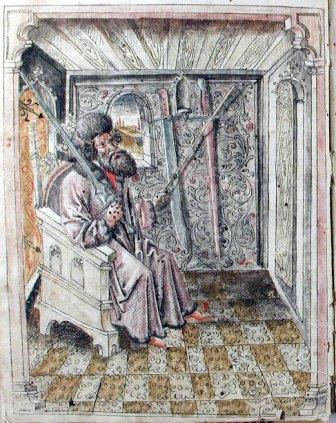
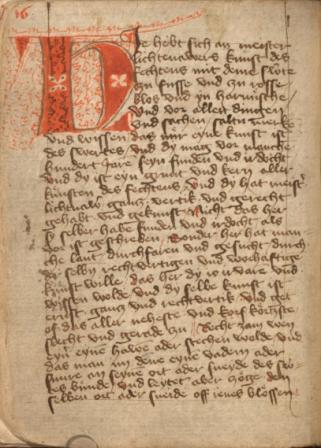
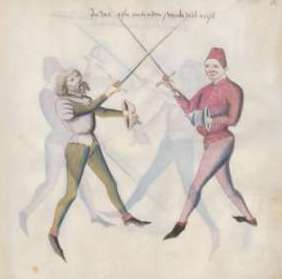
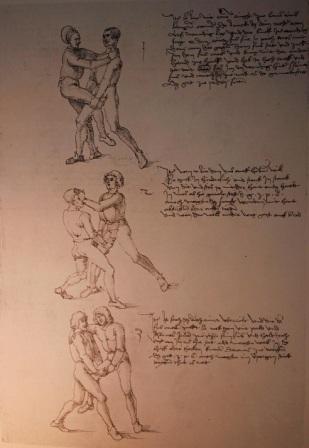
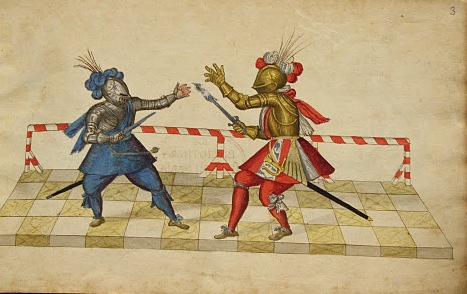
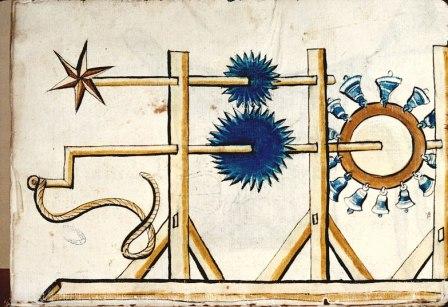
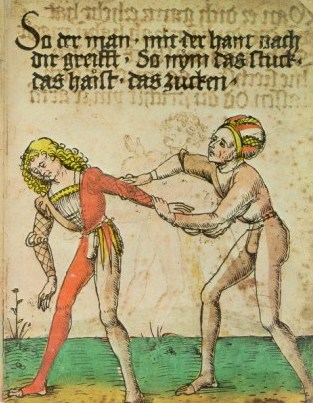

 RSS Feed
RSS Feed
